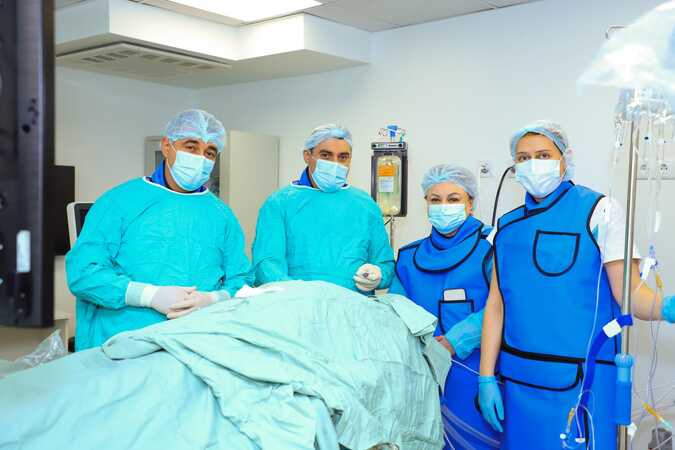What is ablation
The use of ablation in medicine began in the late 20th century and was introduced in Armenia in 2016. Since then, we have performed over 200 ablation procedures.
Ablation refers to the destruction of a tissue or pathological lesion using physical or chemical agents. The most commonly used physical ablation techniques include radiofrequency ablation (RFA), microwave ablation (MWA), cryoablation, irreversible electroporation, laser ablation, and high-intensity focused ultrasound (HIFU).
In physical ablation, microwaves or radiofrequency waves are delivered through an electrode, heating the tissue to 90-110°C and inducing necrosis.
Chemical ablation, on the other hand, involves injecting ethanol or acetic acid directly into the target tissue, a method particularly effective for hepatocellular carcinoma. Compared to chemical ablation, physical ablation offers a superior therapeutic effect by denaturing tumor proteins, leading to complete tissue destruction.
Global clinical experience and published data confirm ablation’s significant role in cancer treatment. It can be used alone or in combination with other therapies such as chemotherapy and surgery. Ablation is highly effective in treating primary liver cancer, renal cell carcinoma, primary lung cancer, breast cancer, and metastatic lesions in the liver and lungs (e.g., from colorectal cancer, neuroendocrine tumors, and breast cancer). Beyond oncology, ablation is a radical treatment for benign thyroid nodules and osteoid osteoma, a benign bone tumor.
Like any therapeutic method, ablation has specific indications and contraindications. Ablation is most effective for small tumor lesions up to 4 cm in size. It is primarily performed percutaneously under ultrasound or CT guidance, though it can also be used during open or laparoscopic surgeries. As a minimally invasive locoregional treatment, percutaneous ablation typically requires only short-term hospitalization.











